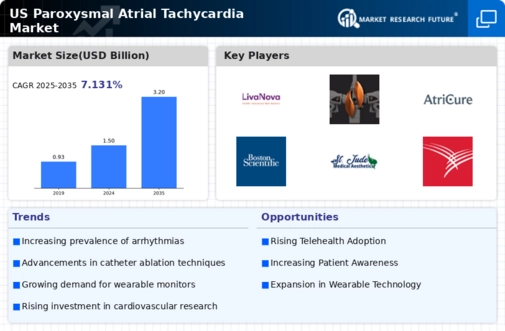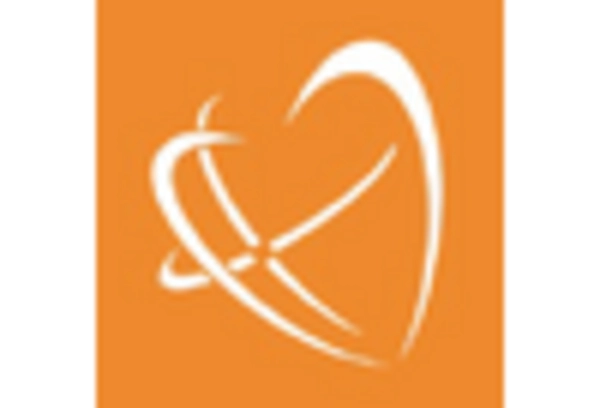Emerging Telehealth Solutions
Telehealth solutions are reshaping the paroxysmal atrial-tachycardia market by enhancing access to care. Telemedicine platforms enable patients to consult with healthcare providers remotely, facilitating timely diagnosis and management of atrial tachycardia. This is particularly beneficial for individuals in rural or underserved areas, where access to specialized cardiac care may be limited. As telehealth continues to gain traction, it is expected to increase patient engagement and adherence to treatment plans. Market data suggests that the telehealth segment is poised for rapid growth, potentially transforming how patients with paroxysmal atrial-tachycardia receive care and support.
Rising Incidence of Atrial Fibrillation
The increasing prevalence of atrial fibrillation (AF) in the US is a notable driver for the paroxysmal atrial-tachycardia market. Studies indicate that approximately 2.7 to 6.1 million individuals in the US are affected by AF, with a significant portion experiencing paroxysmal forms. This rise in incidence is attributed to factors such as an aging population and lifestyle changes, including obesity and sedentary behavior. As more patients are diagnosed with AF, the demand for effective treatment options, including antiarrhythmic drugs and catheter ablation procedures, is likely to grow. Consequently, this trend is expected to bolster the paroxysmal atrial-tachycardia market, as healthcare providers seek to manage and treat these patients effectively.
Increased Focus on Preventive Healthcare
The growing emphasis on preventive healthcare is influencing the paroxysmal atrial-tachycardia market. Healthcare providers are increasingly advocating for early detection and management of risk factors associated with atrial tachycardia, such as hypertension and diabetes. This shift towards preventive measures is likely to result in more patients being screened and diagnosed earlier, leading to timely interventions. As a result, the demand for treatment options in the paroxysmal atrial-tachycardia market may rise, as healthcare systems prioritize proactive management strategies. This trend reflects a broader movement within the healthcare sector to improve patient outcomes and reduce long-term healthcare costs.
Advancements in Catheter Ablation Techniques
Innovations in catheter ablation techniques are transforming the landscape of the paroxysmal atrial-tachycardia market. Recent advancements, such as the development of high-density mapping systems and improved catheter designs, have enhanced the efficacy and safety of ablation procedures. These technologies allow for more precise targeting of arrhythmogenic foci, leading to higher success rates and reduced complication risks. According to market data, the catheter ablation segment is projected to witness a growth rate of over 10% annually, driven by these technological improvements. As healthcare providers increasingly adopt these advanced techniques, the paroxysmal atrial-tachycardia market is likely to experience substantial growth, catering to the needs of patients seeking effective treatment options.
Growing Investment in Cardiovascular Research
The surge in investment in cardiovascular research is a critical driver for the paroxysmal atrial-tachycardia market. Public and private funding initiatives are increasingly focusing on understanding the underlying mechanisms of atrial tachycardia and developing novel therapeutic approaches. For instance, the National Institutes of Health (NIH) has allocated significant resources towards cardiovascular research, which includes studies on arrhythmias. This influx of funding is expected to accelerate the development of new drugs and technologies, thereby expanding the treatment options available in the paroxysmal atrial-tachycardia market. As research progresses, it may lead to breakthroughs that enhance patient outcomes and drive market growth.

















Leave a Comment